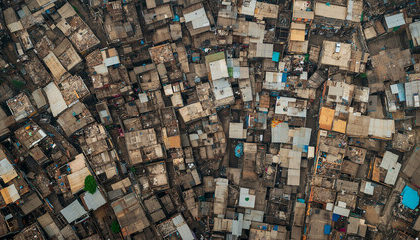Hi Readers
I am blogging on this topic at huge request of reviewers because I mentioned this in my first Introductory Vlog.
I wrote this article on 26th, July 2021 for my LinkedIn page: the original of which can be found at the below mentioned link to describe what was happening in Pakistan at that time.
I am now blogging on this because the situation similar to July 2021is still prevailing hence, people should understand it as much as they can.
Discursive Deflection, Social media and Pakistan.
Everyone understands the importance of social media under the current world scenario. It is being used (more misused) in Pakistan as it is in other countries. Many may ask: “what does this have to do with ‘Discursive Deflection’?”, the two words that prompted me to write this article. I am sure the reader will enjoy this especially when they will understand “Discursive” and “Deflection” and its relevance under the current scenario in Pakistan.
Discursive is a style of rambling from topic to topic in speech or writing with changes in subject that are hard to follow. Rambling during speech or writing indicates that the topic is not clear, lengthy, not particularly important or the person making the speech is either confused, doesn’t understand what he/she is talking about, or being presented in a confusing manner to deliberately mislead the masses.
Discursive style is usually adopted under three different conditions,
Firstly, when someone is ill at ease with the traditional style, expression, discourse, and is looking for different ways of thinking and giving meaning to it.
Secondly, the person wants to constitute knowledge and social practices that suit’s power and its inherent relations with the knowledge who’s quality and base exists in someone else’s mind where it can be influenced by personal feelings, taste or opinion.
Finally, discursion may be employed as a tactic when someone wants to deflect or depart from the usual expected or desired course often by distraction. For example, deflecting criticism on years long rumbling that this country is seeing for the last 6 years, spreading mis and disinformation, deflecting the impact of someone’s wrongdoings through blaming others especially the opponents, without realizing that the truth eventually catches up those who deflect.
The term “Discursive deflection” was first used to describe the impact of “tweets” made by the presidential nominee and then the elected president during 2016 US general election. The most objectionable and seriously criticized category of tweets was the one that attacked mainstream media using derogatory and contemptuous labels and describe institutionalized media as “fake media” with its broadcasts termed as “fake news”.
Other category includes tweets made with derogatory and abusive titles used for mendacious propaganda against the opponents to deter public from trusting media reports, critics of the president and/or the presidency, and seducing people at large to believe that presidential tweets are the only reliable source of truthful information. (Any analogy in Pakistan?)
New York Times’s opinion columnist “Krugman” termed this behavior in 2016 as a “big liar technique” wherein the factual truthfulness of most of the President’s pre-election claims were exposed, that turned out to be irrelevant, ineffective and untruthful. An American cognitive linguist: George Lakoff called this behavior a strategy of “deflection” and used it as a tool to understand the president’s behavior on twitter via those tweets that directly addresses “fake news” along with terms like “fake media” and dishonest media.
He also “discursively” analyzed presidential tweets regarding apparent “dishonest” and “unfair” institutionalized mainstream media to demonstrate how one can cast doubts or suspicion to make people feel less sure or have less trust in institutionalized media and its broadcast (is it not what is seen in Pakistan?).
He did this to achieve his three main objectives.
Firstly, consistently accusing media of being dishonest and untrustworthy as a mean of presenting himself as the only source of truth.
Secondly, he wanted to be presented positively thus, while accusing the mainstream media as fake and dishonest he tries to divert the attention to the only news network he trust: the “Fox News” (in Pakistan, this job is done by the followers of politicians who are more loyal to them than they are to themselves).
Finally, presenting himself as an offender of disseminating fake news, he infect labels the media as proponent of falls reporting and fake news, tweeting for media as dishonest and proponents of fake news but when he tweets a highly contentious claim or statement as truth, he does the same for which he accuses the mainstream media of doing (any analogy in Pakistan)?
Now look around and see what is happening in Pakistan?
Social media tools such as Face Book, Whats App and Twitter are extremely popular in Pakistan with Twitter being the most extensively used tool for an immediate, fast, and widespread dissemination of information and broadening of public debate on various issues.
Another purpose was to circulate political information, access people’s actions, feelings, intentions, opinion and to convey one’s feelings about a specific situation.
Currently however, it has become a favorite tool to ridicule others with abusive language and trolling the opponents. In political campaigning, twitter has an edge over other social media tools due to its power of engaging diverse audiences in dialogue. It allows re-transmittance of posts and comments in the form of “retweets” or “shares” on Facebook. Live streaming further empowered twitter which can effectively be used during political rallies, media trials, crucial debates and press conferences where a twitter stream is often used to display various perspectives and interpretations of the debate held by Government and the opposition. User can annotate an event in real time and share messages and pictures which enables the public to bypass traditional media-created frames and encourages followers to create their own frames.
This allows supporters and followers to devise ways to contribute to the campaign in their own time and on their own terms.
This is where, the user usually try to deflect.
Fake news was another term that also rose to prominence during 2016 US election and is now more popular in Pakistan than the US and is either “wholly false” or contained “misleading elements” incorporated within its content or context”.
Both mis and dis-information are now part of the current digital media where misinformation is unintended sharing of false information online. Dis-information is more malicious, purposeful creation and dissemination of certified untrue information.
Politicians have deployed brigades of youngsters who, using filthy language, are busy doing this job day in and day out without realizing how their youngsters are being brought up, misused and ruined.
There is a third dimension of this situation wherein, social media handlers deliberately share information without witnessing truthfulness.
This dimension is being used by educated elites and pseudo-intellectuals and the phenomenon goes on. Why? because of the ease with which “content can be relayed among users without any considerable fact-checking, scrutiny, or editorial judgement” and the followers usually believer them to be accurate. It appears that the degree to which “content of a news item” represent the reader’s personal liking and disliking is what matters most. In simple words
“narration of the narrative appeared more important than the narrative itself”.
This speaks volumes about the changing nature of the news information landscape, which is so fragmented, decentralized that it can be exploited by the technological and cultural influence of the global social media platforms. It is extremely simple for the users to
share only the fragment of the news which suits them: a practice which is commonly known as “out of context reporting” and has extensive usage in Pakistan.
If a politician or not politician, lies through twitter and the followers religiously believe them then,
imagine, what type of students, teacher, lawyers, intellectuals, and other cadres Pakistan will have in future?
Certainly, a huge crowd of misinformed people.
In USA, if a media publish a fake news, the reader can either believe it, disregard it or, research to determine its truthfulness. In Pakistan, this job is usually done by the investigative journalists, but a tweet cannot be classified as fake news because it come directly from individuals and not from the media. Thus, if a tweet is controversial, it can generate heated debate in the country and around the globe and
can pose a threat to the country’s security and integrity.
Thus, to fully understand the impact of “twitter” within the political arena, readers must engage in fact-checking instead of relying on the words of anyone who’s tweets has a huge following.
Is it possible in Pakistan where half the population is uneducated, and the remaining half is partially educated or fake degree holders? Look around, watch, think and analyze the environment we are living in and raising our children. Most of the people in this country have masked their faces, but please do try to see what is behind the mask. Stay blessed and I will see you next week. Till then, BYE





